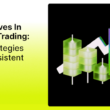Catalogue - Key Takeaways Show

Decentralised finance (DeFi) has emerged as a transformative force to cater to the cryptocurrency ecosystem, offering innovative financial solutions that operate without the involvement of intermediaries. As popularity of DeFi continues to rise, it becomes important for investors to understand the key indicators that can help them navigate in a fast paced and dynamic landscape. In this article, we will discuss seven essential indicators that every DeFi investor must know to make informed decisions and mitigate risks.
Total Value Locked (TVL)
Total value locked (TVL) is a fundamental metric to represent the total value of all assets locked in a particular DeFi protocol or platform. TVL provides deeper insights into the popularity and adoption of a protocol, indicating the level of trust and confidence users have on this platform. A consistently increasing TVL indicates a growing user base and some potential investment opportunities, while a declining TVL may signal potential issues or decreased interest.
Annual Percentage Yield (APY)
APY is a critical indicator for yield farming and liquidity provision in DeFi. It is a representative of potential annualized return on investment for providing liquidity or staking assets in a DeFi protocol. Monitoring APY allows investors to identify high yield opportunities and make comparisons for returns on different protocols. However, it is important to consider the risks associated with the high APY, such as smart contracts and their ancillary vulnerabilities and market volatility.
Tokenomics and Supply
Understanding the tokenomics and supply dynamics for a DeFi project is vital for investors. Analyze factors such as token supply, distribution mechanism, inflation rates and token utility within the ecosystem. A well designed tokenomics model with limited inflation rate clear use case can contribute to the long-term value appreciation of a DeFi token.
Audit and Security
DeFi protocols are built on smart contracts that bridge the paramount security concern. Look for protocols that have undergone complete and thorough security audits by reputable firms to mitigate the risk of vulnerabilities and potential exploits. Audit reports also provide insights into protocol’s code quality, potential vulnerabilities, and the team’s commitment to best security practices.
Community and Social Sentiment
The strength and engagement of a DeFi community can significantly impact the success of the project. Monitoring social media platforms, forums, and community channels, gauge sentiment and accumulate insights from active participants. A vibrant and supportive community can contribute to protocol development, adoption, and overall market sentiment.
Liquidity and Trading Volume
Liquidity and trading volume play a crucial role in DeFi investments, as they affect the ease of buying and selling of assets. Higher liquidity and trading volume result in narrower spreads, reduced slippage, and improvised market efficiency. Monitoring liquidity pools and trading volume on decentralised exchanges (DEXs) can help investors assess the overall market activity and potential opportunities.
Development and Roadmap
Evaluate the development and progress roadmap of a DeFi project. Try to look for transparent communication, regular updates, and a clear vision for the future of protocol. Assess the team’s expertise, track record and their ability to deliver on their promises. A well-executed development plan and ongoing innovation indicate a project’s potential for growth and long-term success rates.
Final Thoughts
As DeFi ecosystem continues to expand, staying informed and understanding the key indicators is essential for many investors looking to capitalize on presented opportunities. By monitoring indicators, such as TVL, APY, tokenomics, security audits, community sentiments, liquidity, trading volume and development progress, investors can make informed decisions. This can help them to navigate into the DeFi landscape effectively. It is crucial to conduct thorough research, diversify investments and stay updated with the ongoing crypto market developments.
By giving DeFi investors the resources and tools they need to make wise trading decisions, Coinflare, a cryptocurrency exchange, is empowering this group of investors. The platform is cognizant of the DeFi landscape’s complexity and the value of data-driven analysis. Coinflare provides thorough market data, real-time charts, and indicators that let investors track and assess important parameters like liquidity, trading volume, and price changes. Additionally, Coinflare offers research studies and instructional resources to keep investors informed of the most recent advancements in the DeFi industry. By arming investors with trustworthy data and insights, Coinflare hopes to enable them to successfully negotiate the choppy DeFi market and make well-informed trading decisions that complement their investing strategy.
About Coinflare
Coinflare is a cryptocurrency exchange platform that offers traders a secure, easy-to-use, and convenient way to buy, sell and trade cryptocurrencies. Our platform has been designed with investors of all levels in mind, whether they are just starting out or experienced traders. We offer various features and tools to help users make the best trading decisions possible, including advanced charting and analytics, real-time market data, and various customisable trading interfaces. At Coinflare, we are dedicated to empowering our users and helping them reach their financial goals.
Stay in the loop about our launches, trading pair announcements, contests and more by following u on Discord, Telegram, and Twitter.









